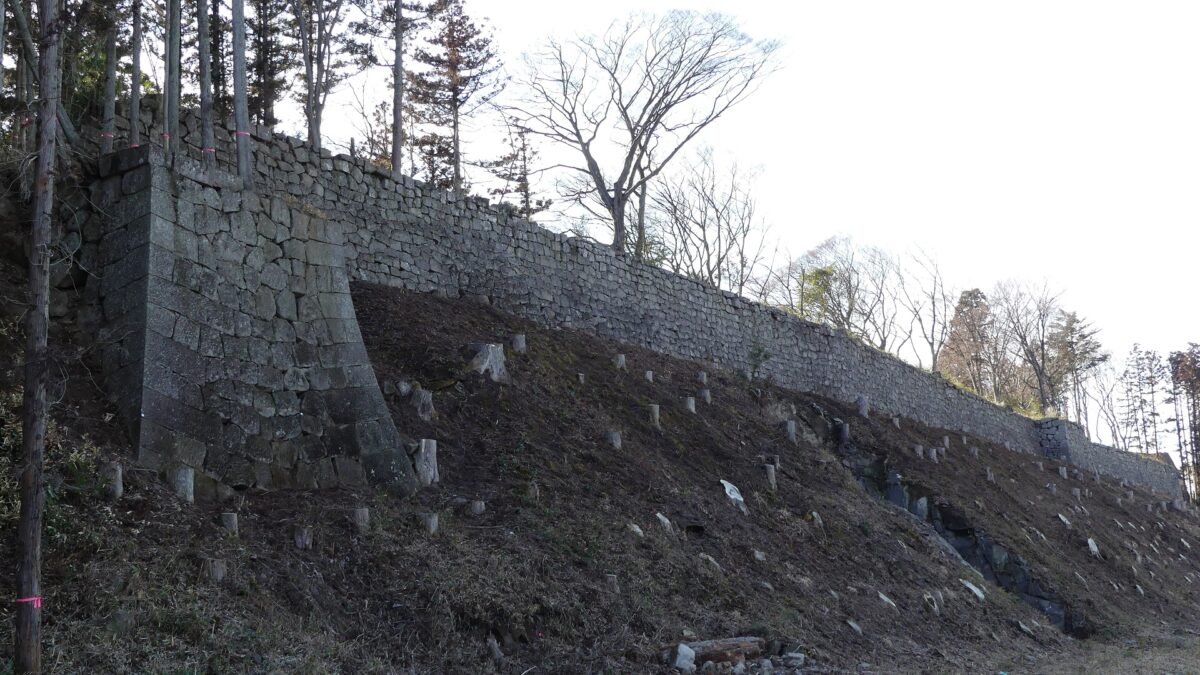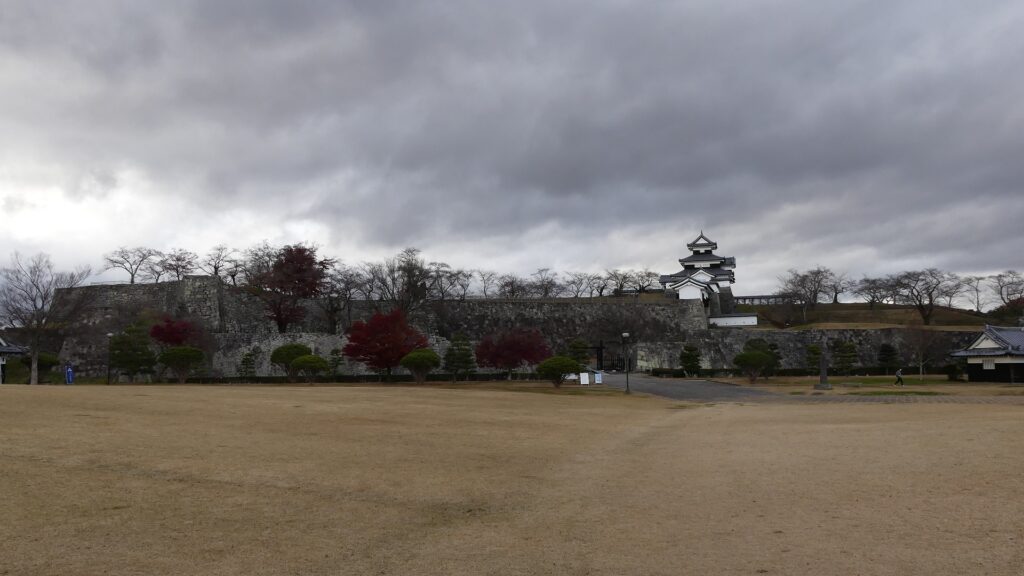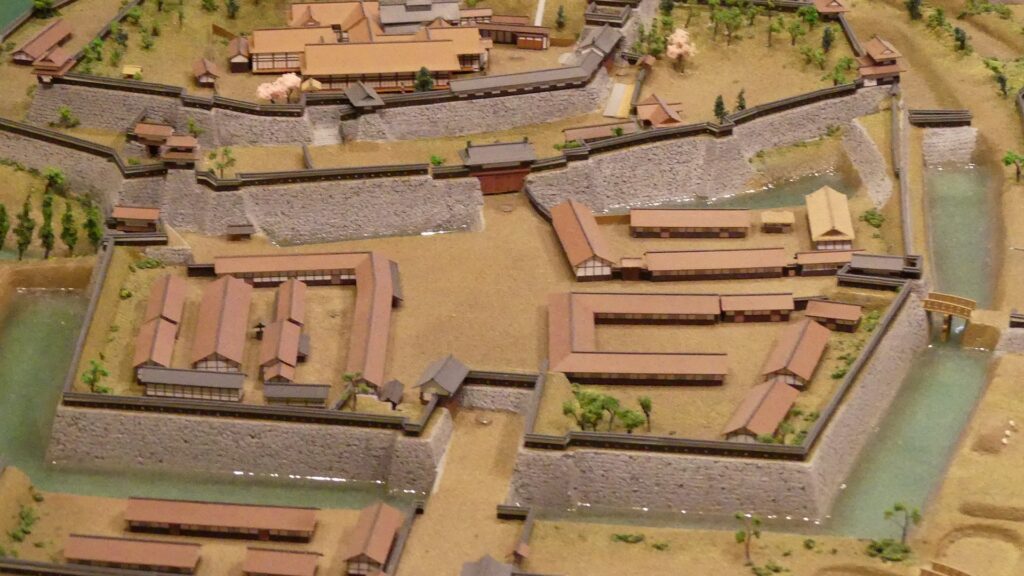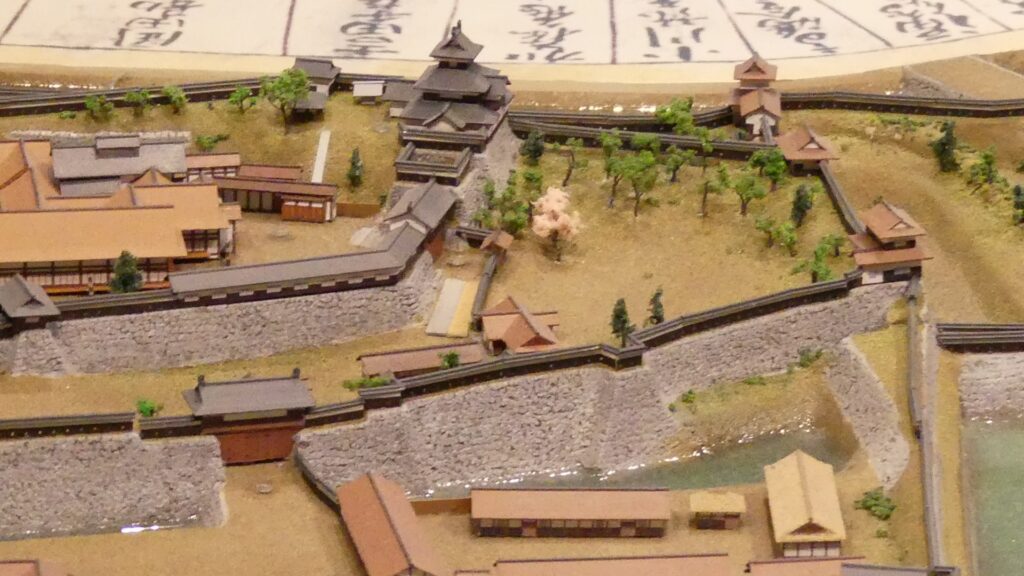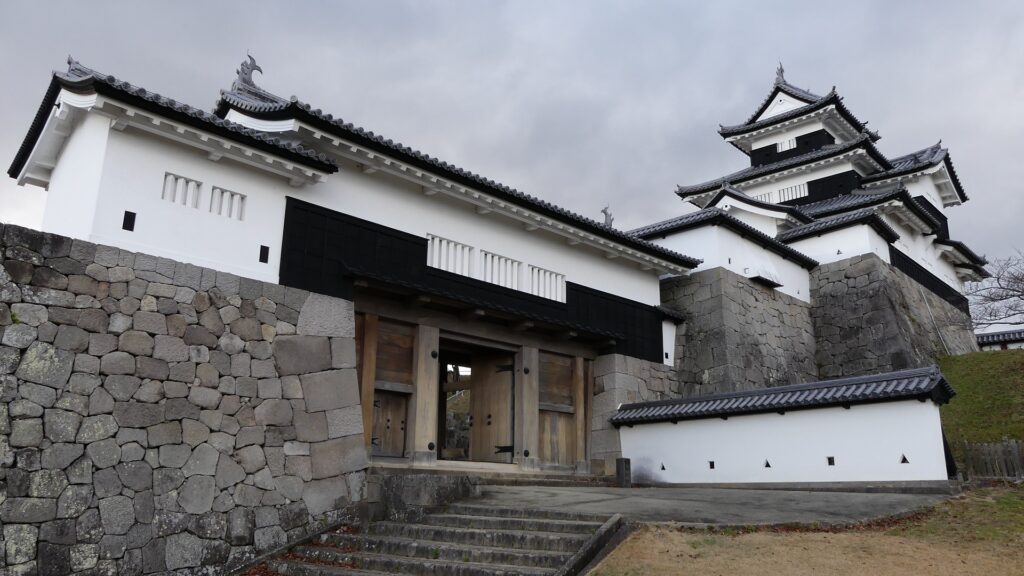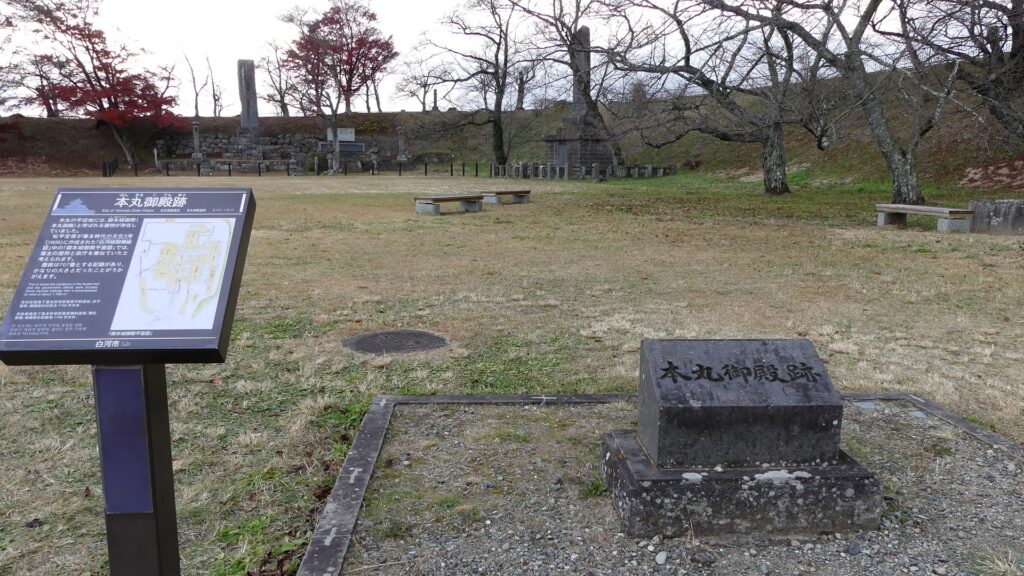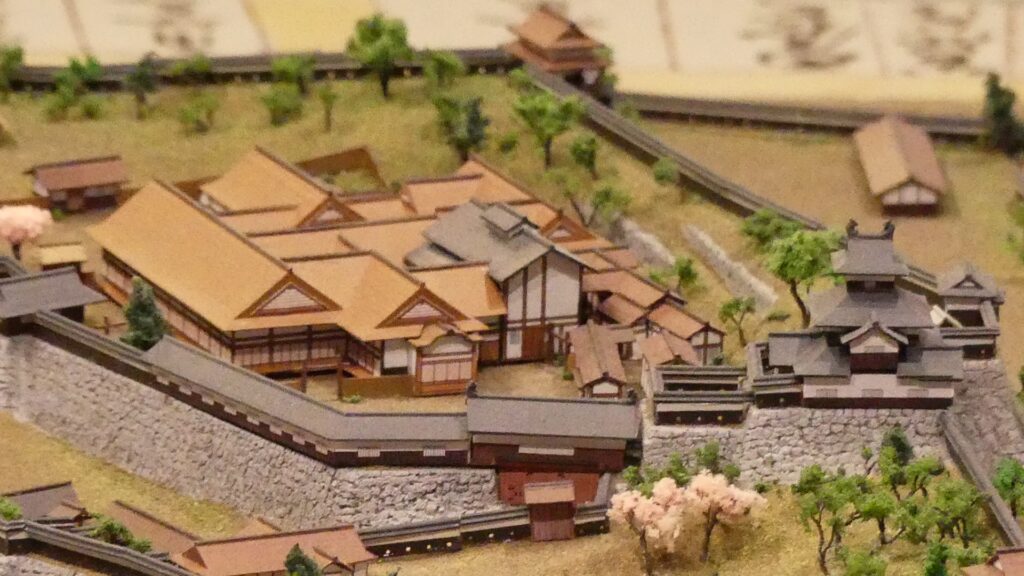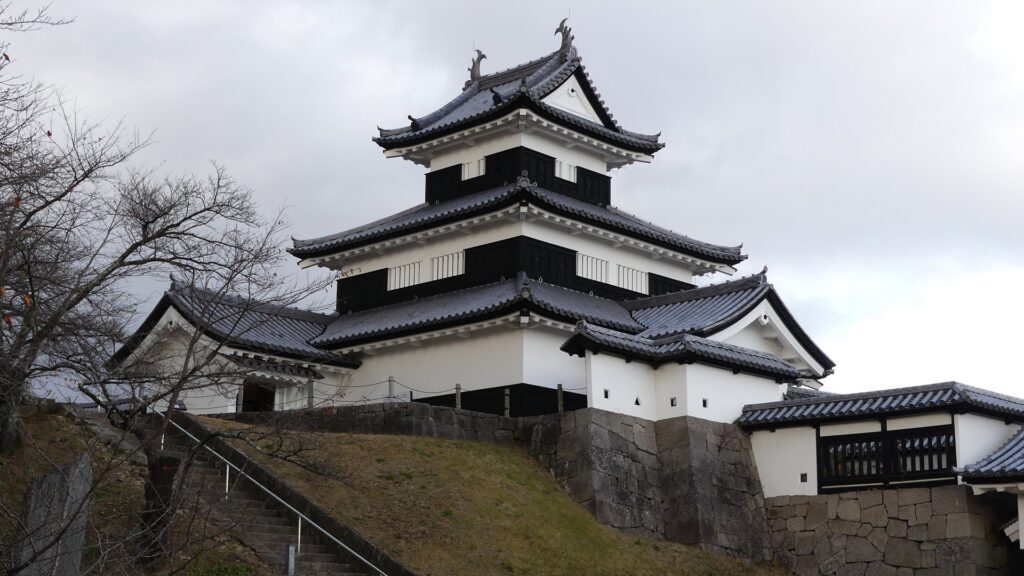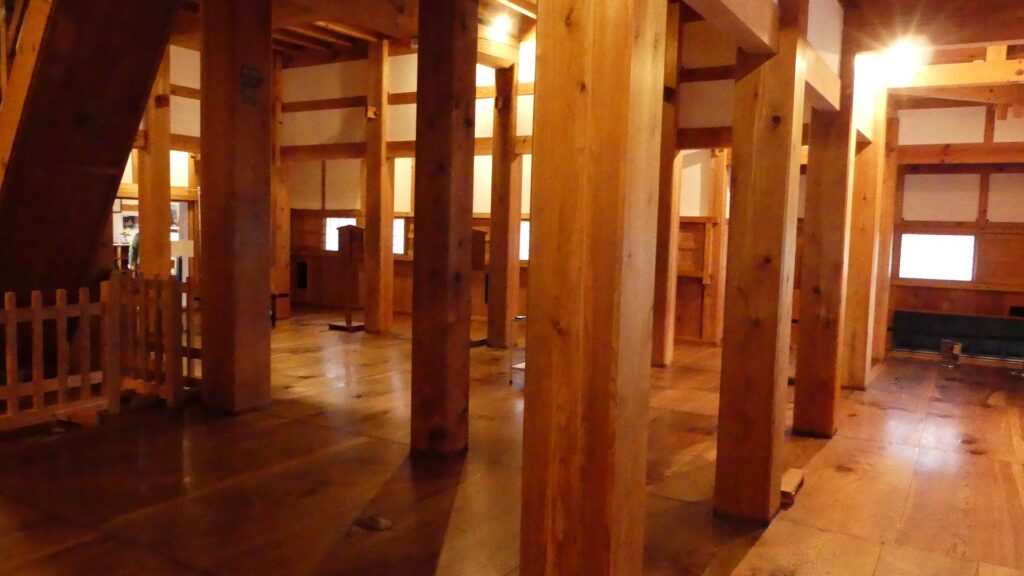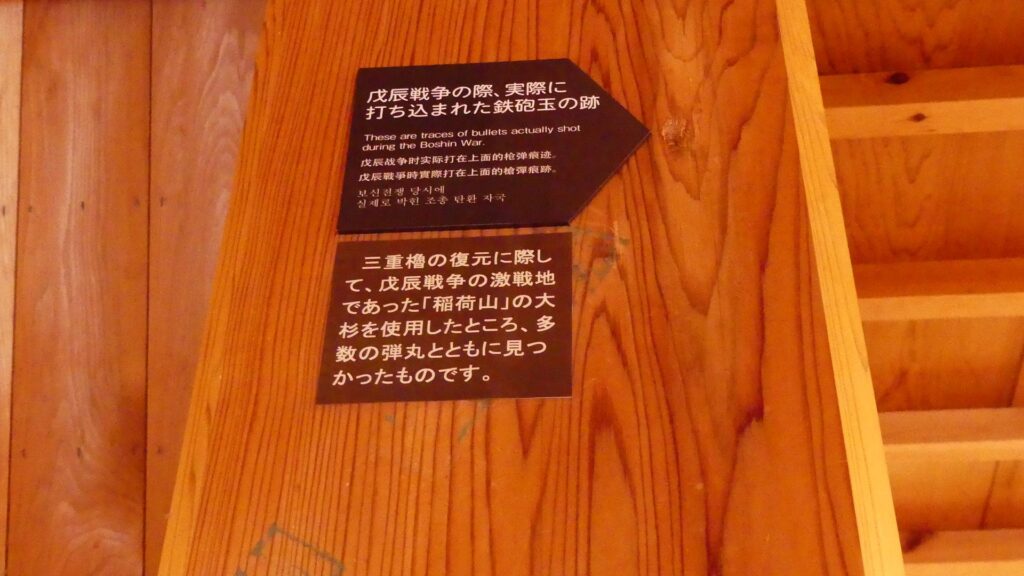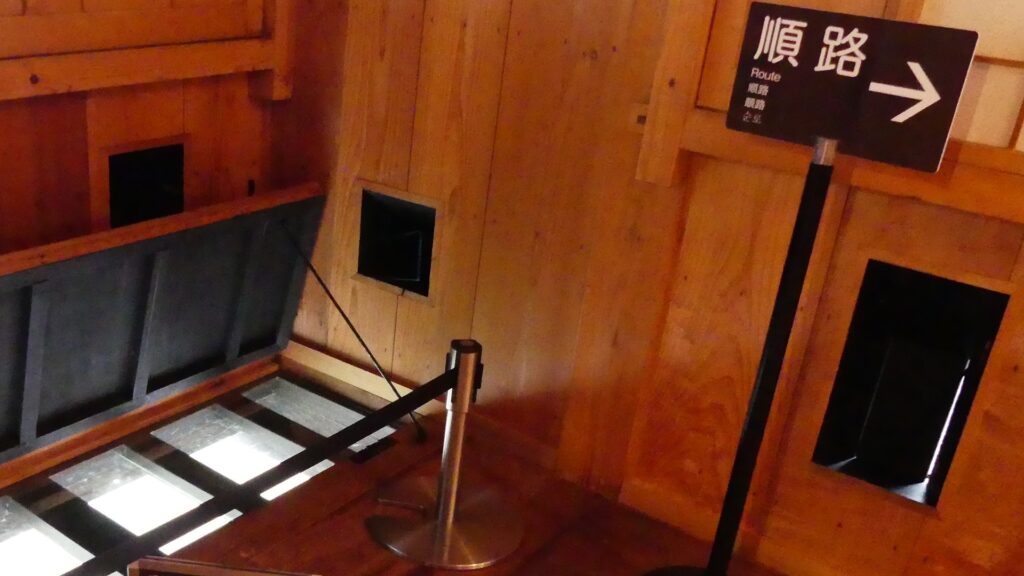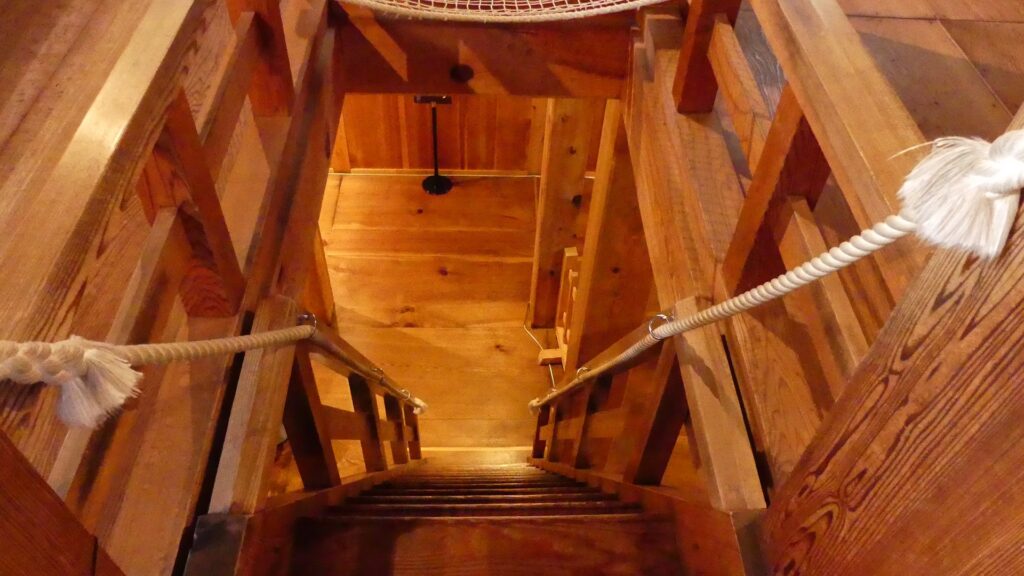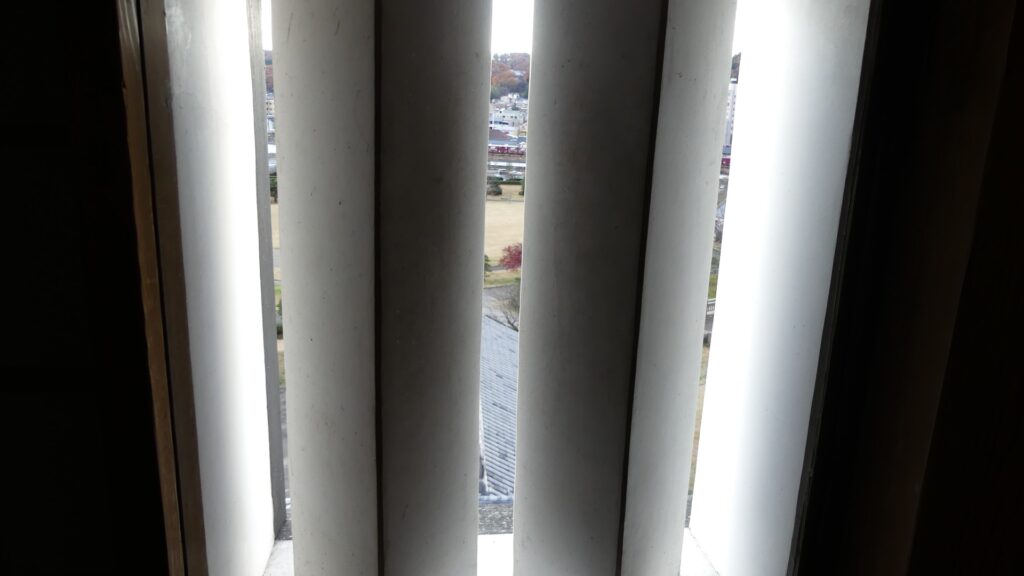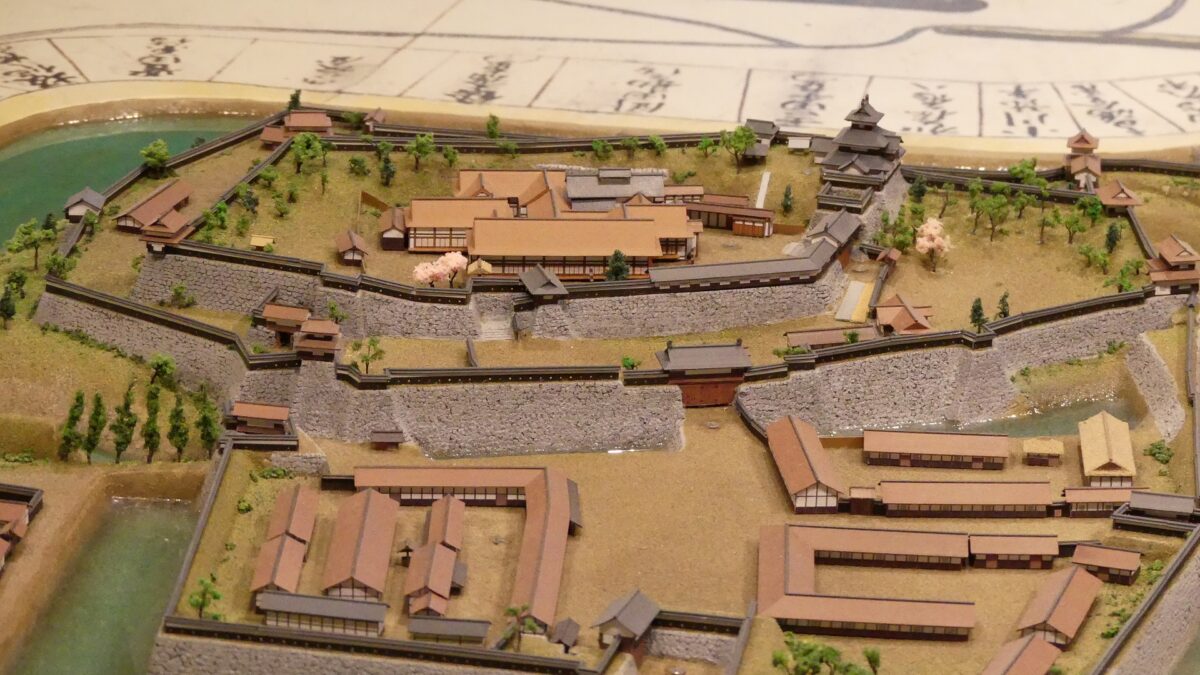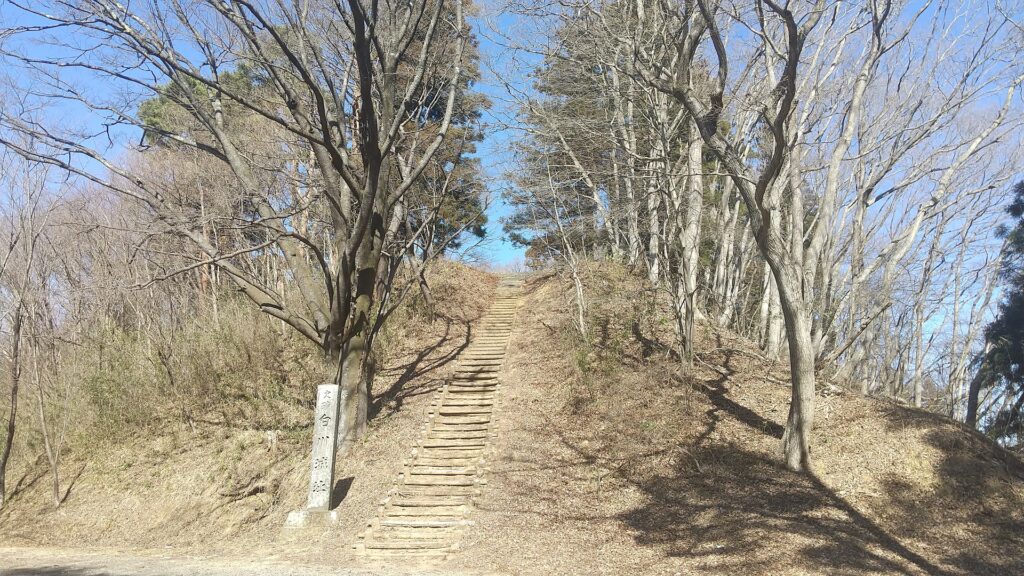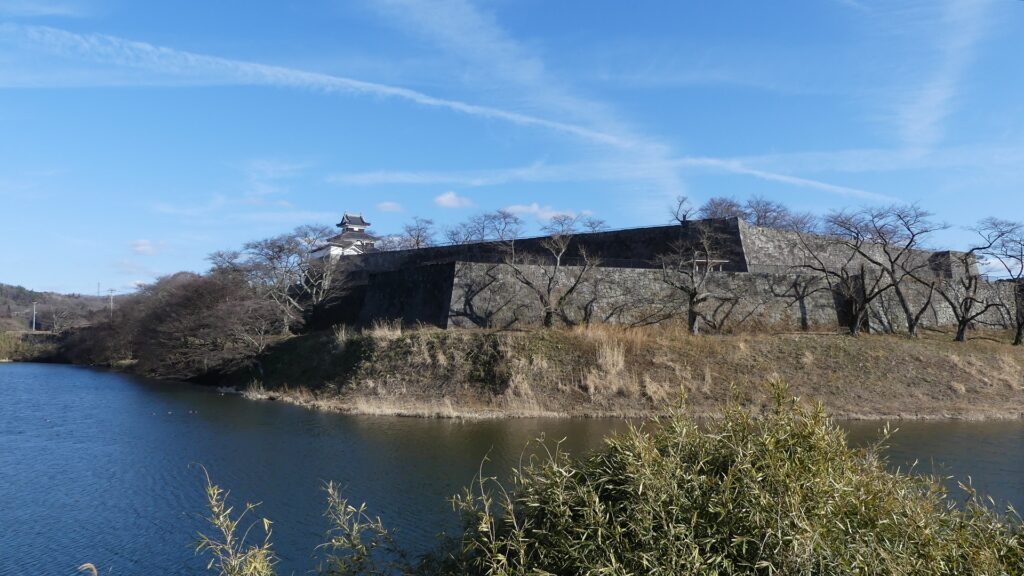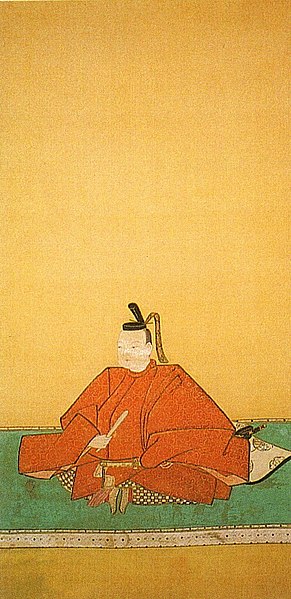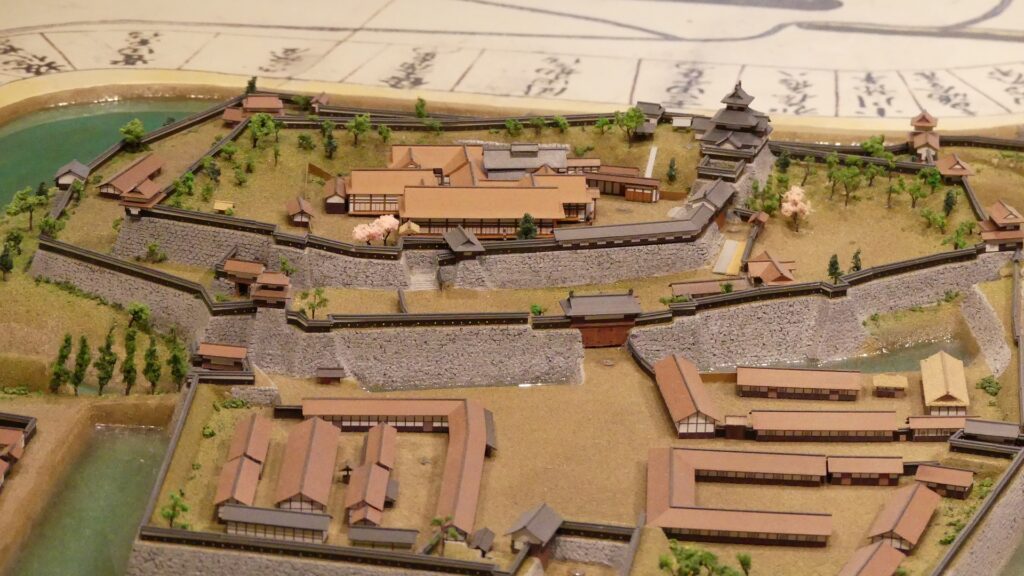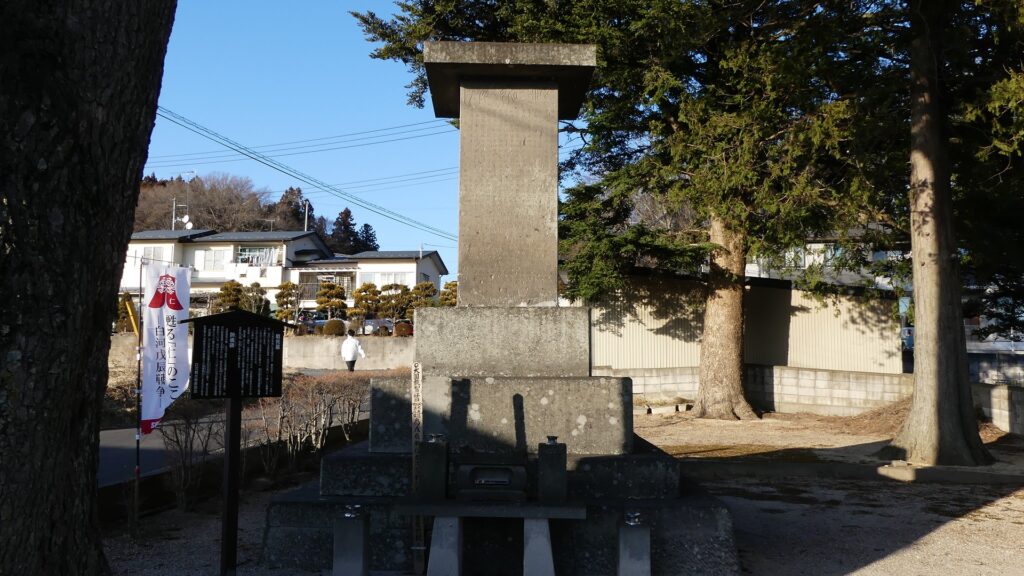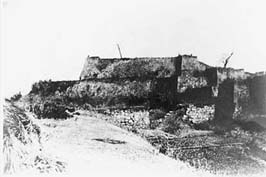Features
Walking around Main Enclosure
If you want to see other attractions of the castle, you can get out of the main enclosure through the ruins of Sakura-no-mon (meaning the cherry gate) to walk around the stone walls of the enclosure on the belt enclosure, the lower tier of the main portion. The ruins of Tsukimi-Yagura (meaning the moon viewing turret) are in front of the gate ruins of the enclosure, which look very strong with their remaining stone wall base.
The map around the main enclosure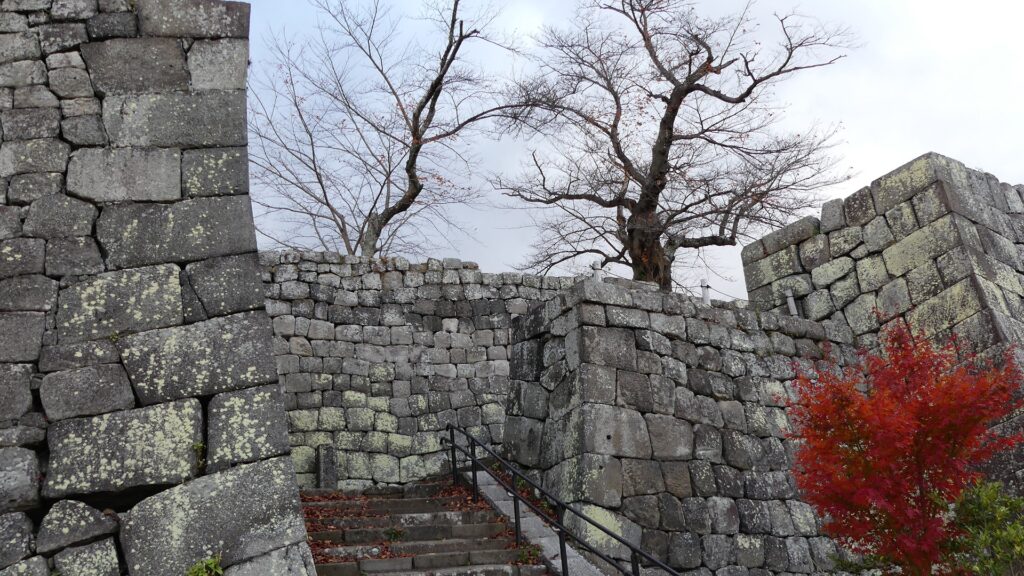
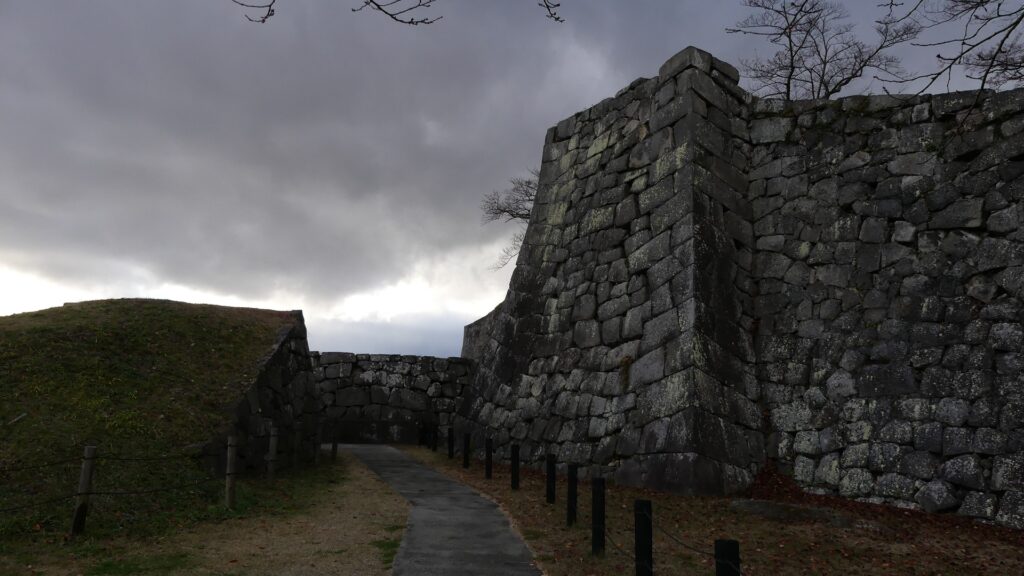
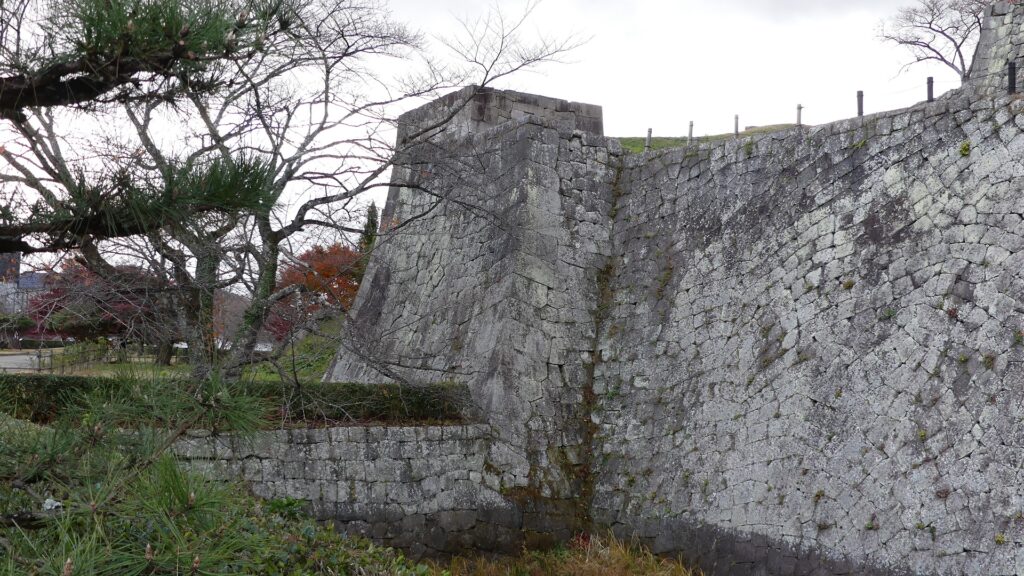
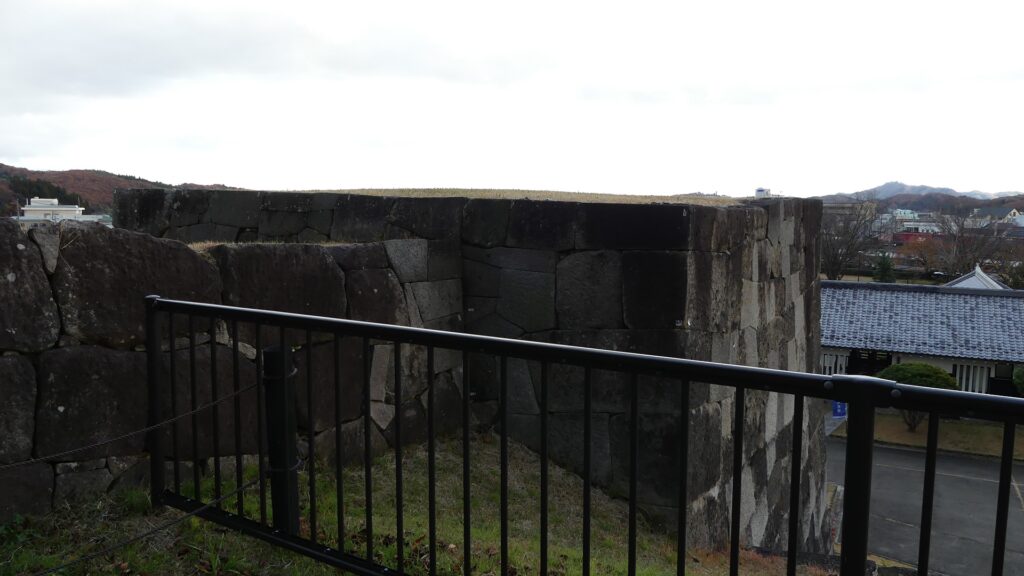
The belt enclosure surrounds the western and northern sides of the main enclosure. You can feel relaxed by walking on the belt enclosure, while enjoying looking at the great, long and high stone walls of the main enclosure. These stone walls look well-maintained. However, they collapsed heavily during Great East Japan Earthquake in 2011 and were repaired by Shirakawa City for the following eight years (completed in 2019).
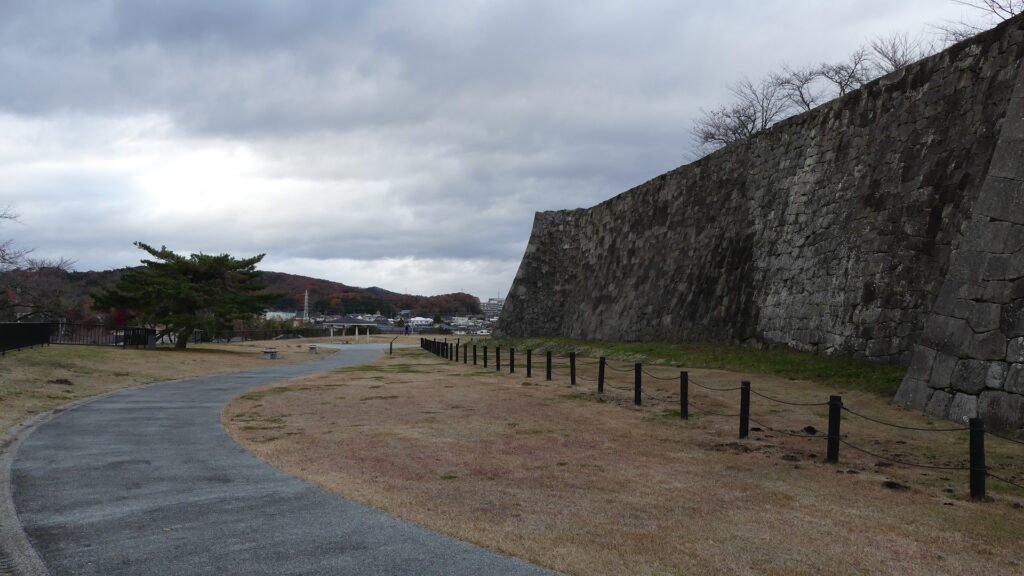
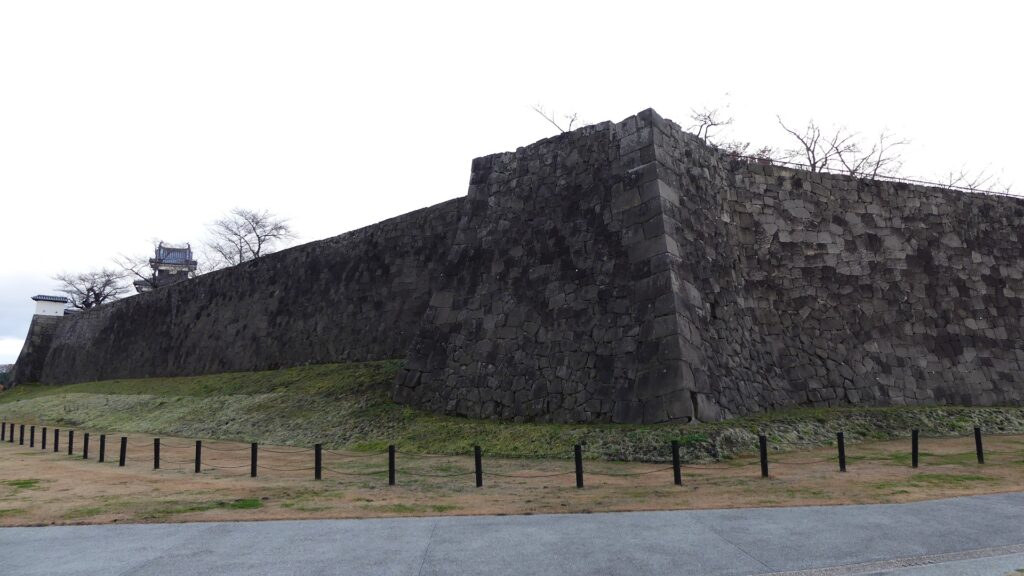
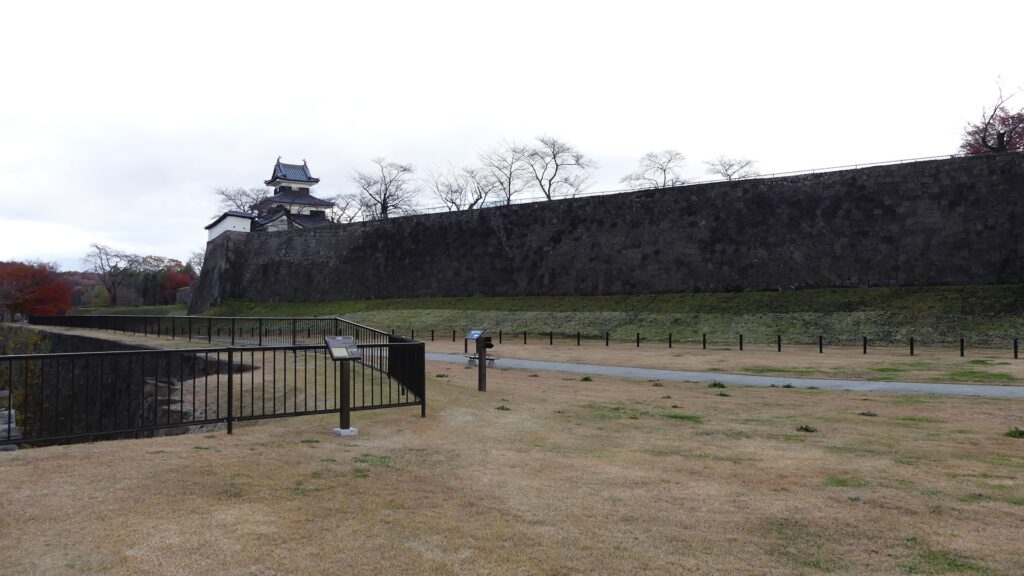
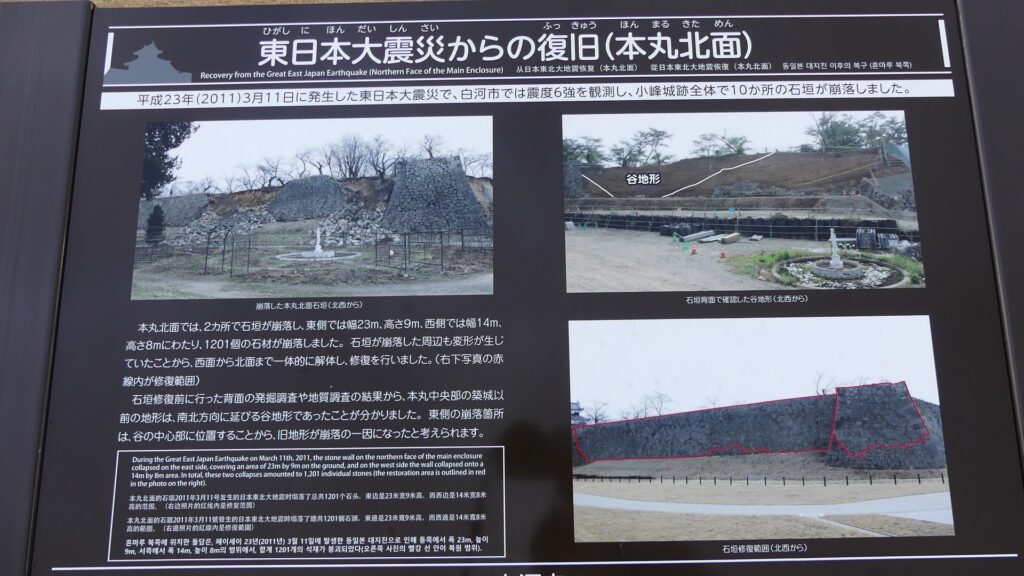
You will eventually reach the other gate ruins of the belt enclosure, called Ya (arrow)-no-mon. You can see a great view of the three-level turret at the northeastern edge of the main enclosure on the right. However, if you were an enemy, the defenders would attack you through the turret’s machicolations and loopholes facing you.
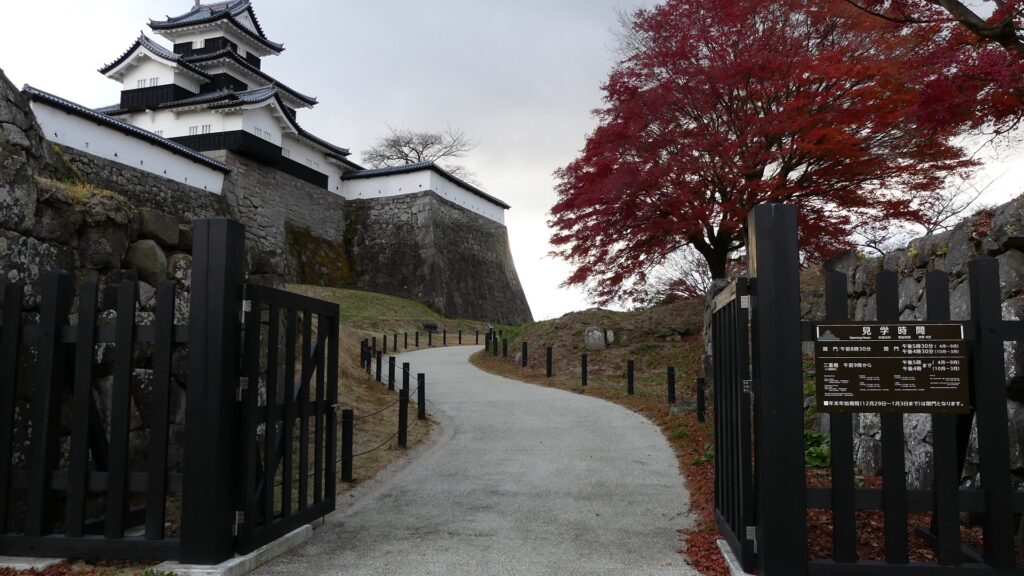
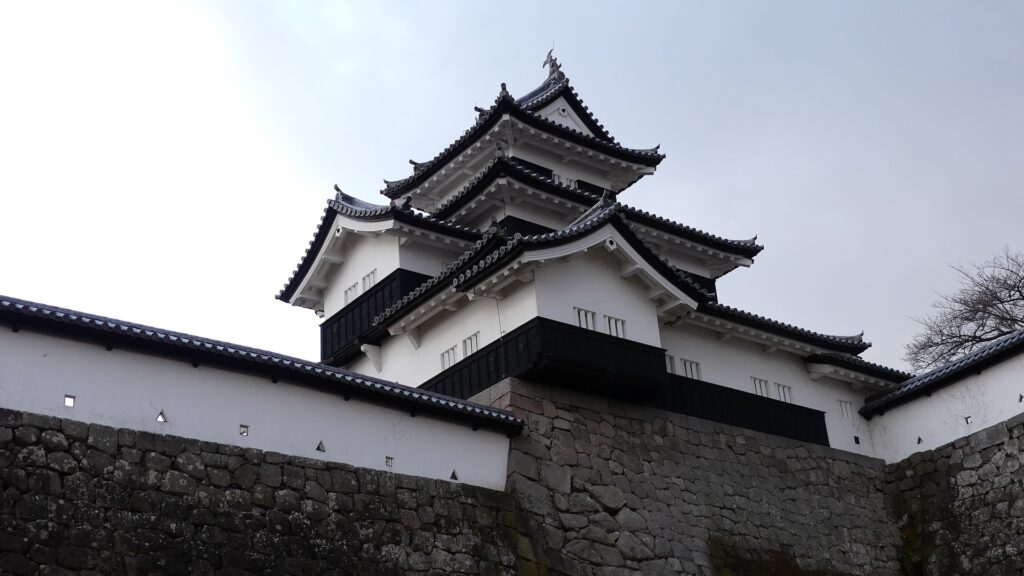
Going to Outside of Castle
Another recommendation for you is to visit the former third enclosure, which is the east of the main portion. It has turned into the city area mainly including public facilities. There is only one remaining castle building among the area, the Taiko-Yagura Turret, which was originally used beside the Taiko-mon Gate in the second enclosure. It was moved to a private sector, converted to a tea room, and finally moved to the current position where it has been since 1930.
The map around the castle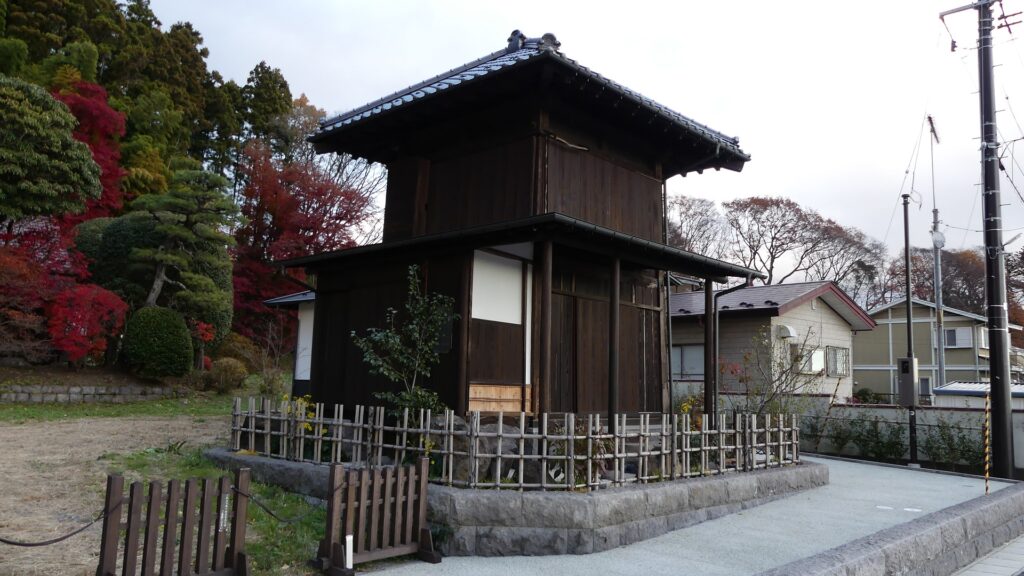
If you go further to the east until the National Route 294 (the former Oshu Road), go along the road to the north until you get near Abukuma River, and look back to the left, you will see another great scenery. It is 180m long stone walls on a hill along the river, called Komine Castle Eastern Stone Walls. In fact, they were recently discovered when the pine trees on the hill were cut down for the bypass road constructions. They must have been built to protect the castle from the threats from the north. These stone walls connect to the back gate of the castle, which opens to the north, but you can’t go directly to the gate due to the construction site between them.
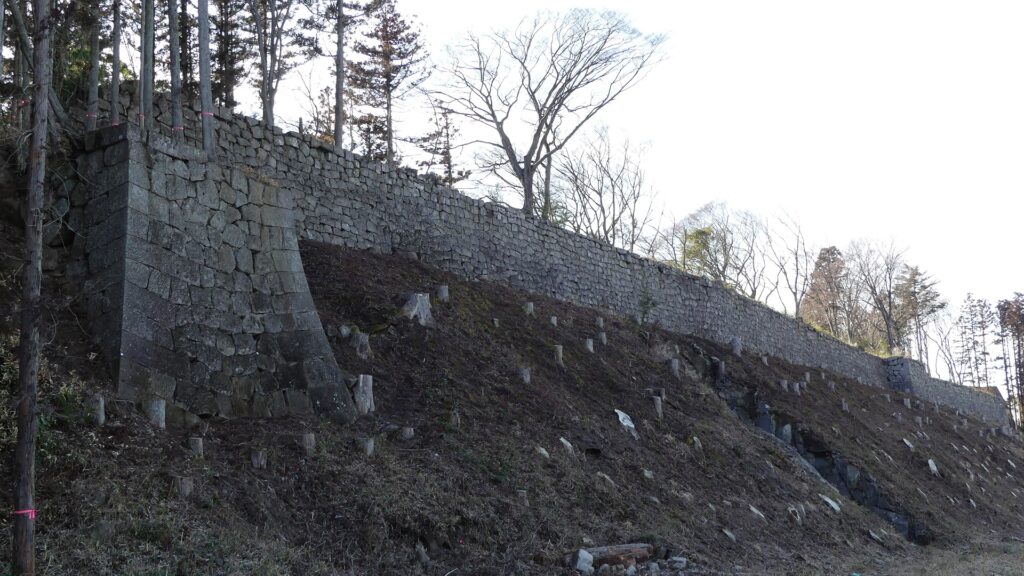
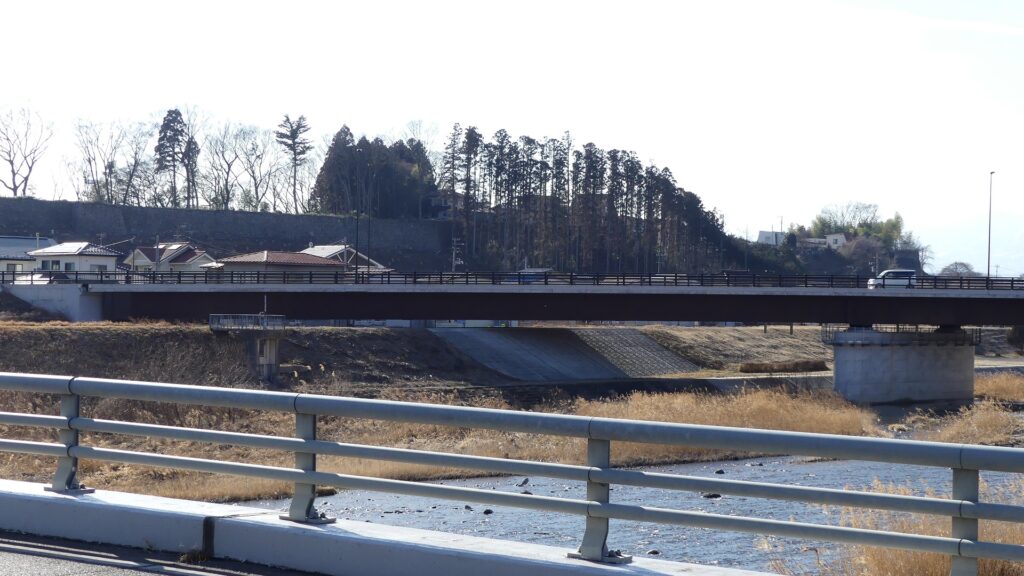
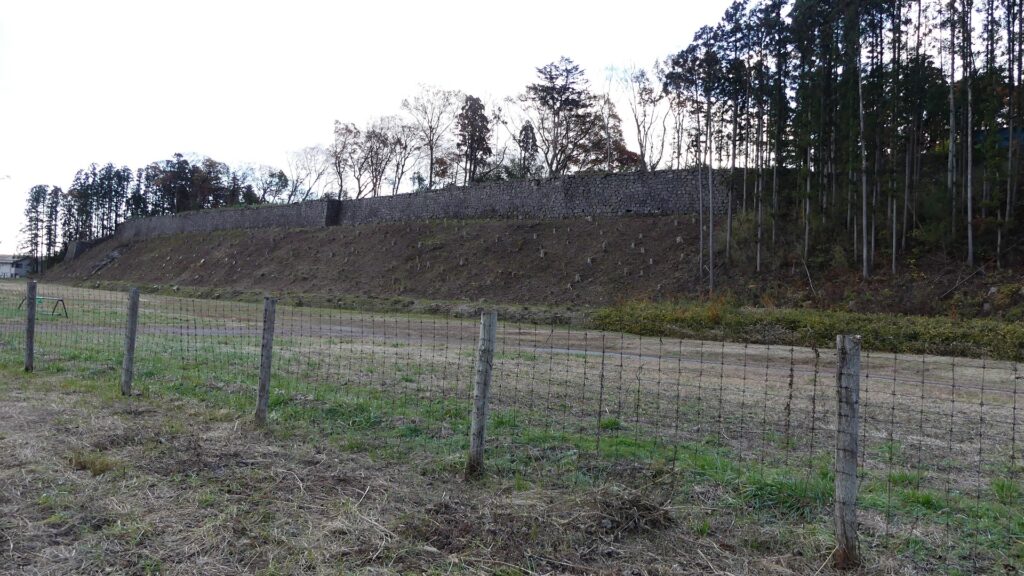
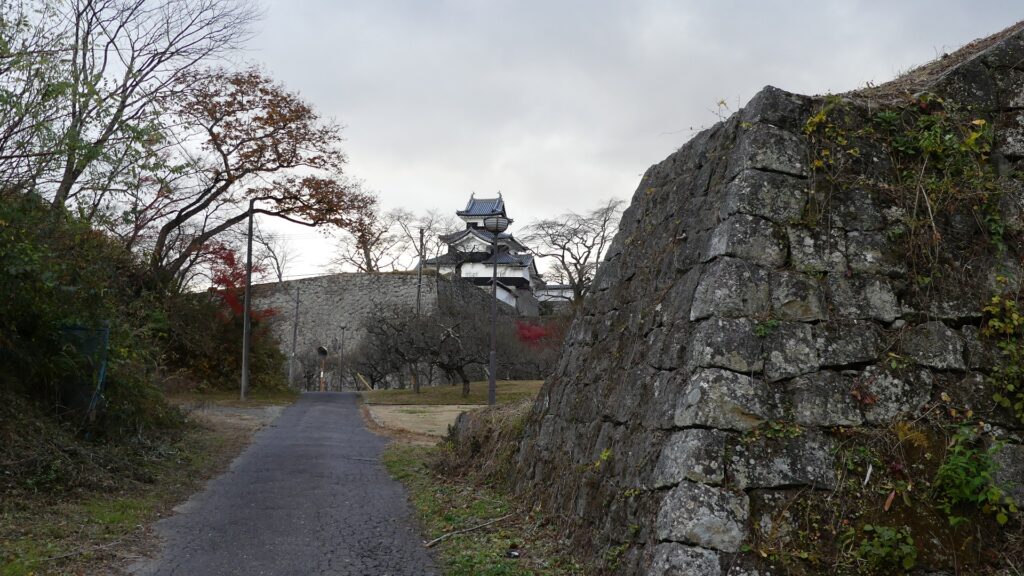
My Impression
While visiting the well-remaining structures and restored buildings of Shirakawa-Komine Castle, I felt the strong intentions of Nagashige Niwa, the builder of them, to protect the castle from possible enemies from the north. He must have been one of the few lords to do it properly and quickly. I also think that the history during the Boshin War lets us to know that such a strong castle had a weak point and could not survive without enough soldiers and proper instructions
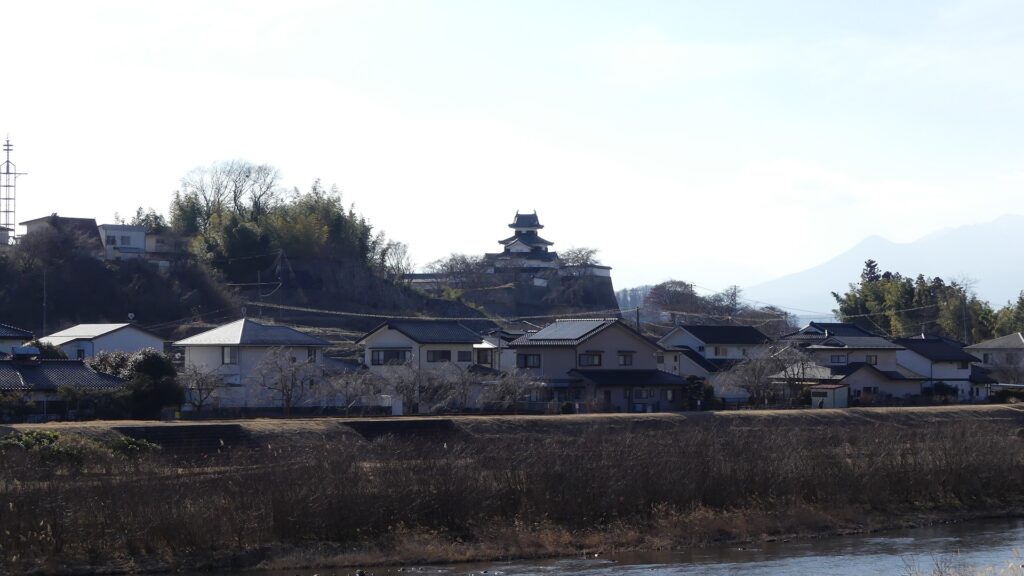
How to get There
If you want to visit there by car, it is about a 10-minute drive away from Shirakawa-Chuo Smart IC on the Tohoku Expressway.
There is a parking lot in the park.
By public transportation, the castle is very near the JR Shirakawa station. You can even see the nice view of the three-level turret from the platform.
From Tokyo to the station: Get the Tohoku Shinkansen super express and transfer to the Tohoku Line at Shin-Shirakawa Station. The destination will be the next station.
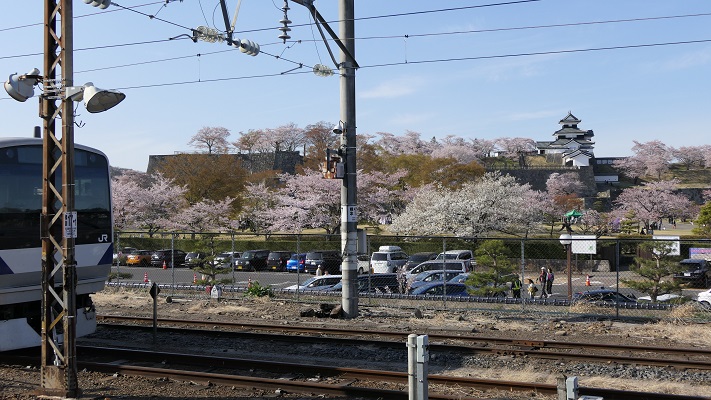
That’s all. Thank you.
Back to “Shirakawa-Komine Castle Part1”
Back to “Shirakawa-Komine Castle Part2”

